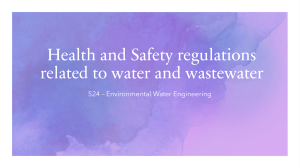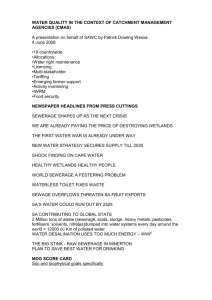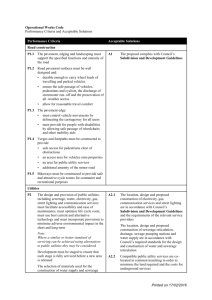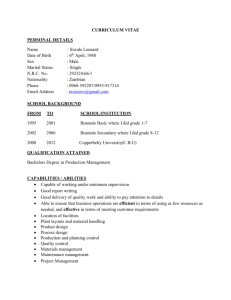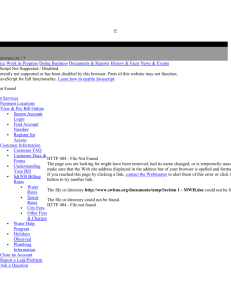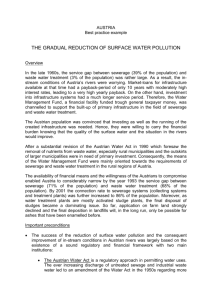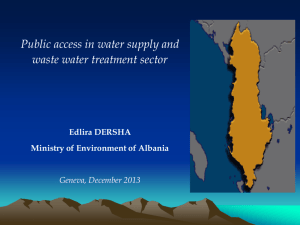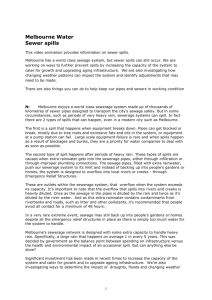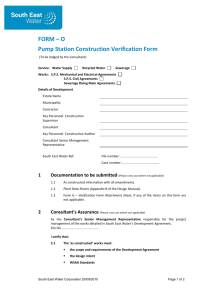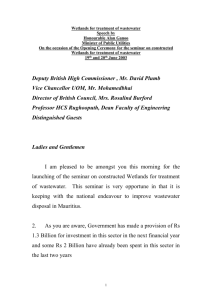CHAPTER 1 1.0 Introduction
advertisement
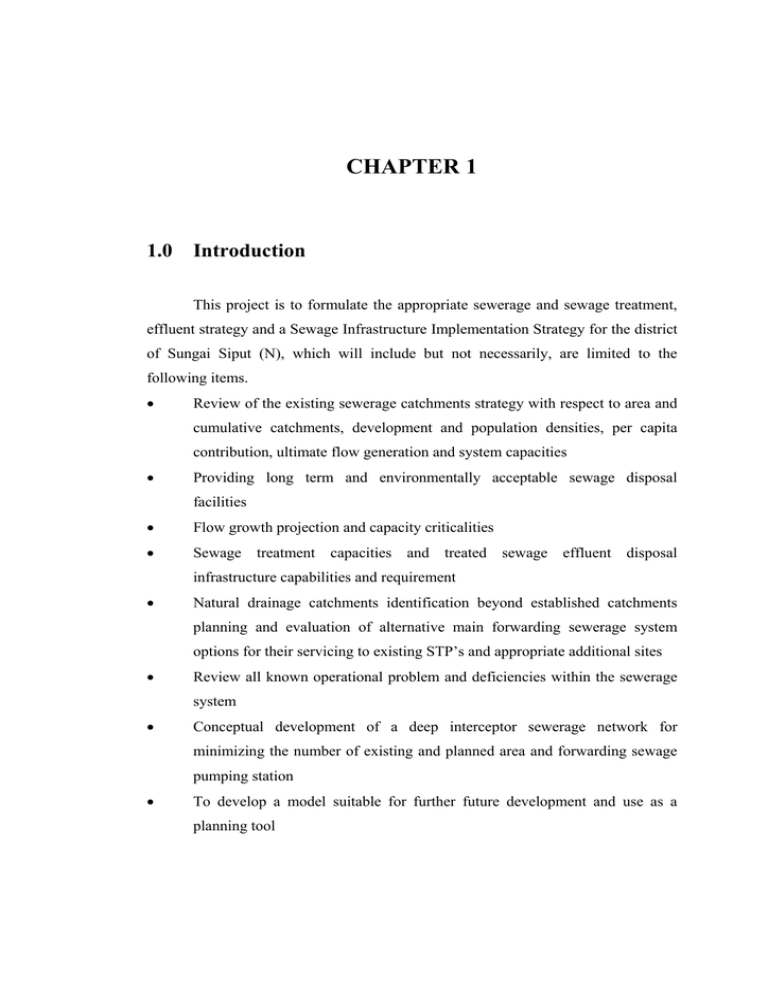
CHAPTER 1 1.0 Introduction This project is to formulate the appropriate sewerage and sewage treatment, effluent strategy and a Sewage Infrastructure Implementation Strategy for the district of Sungai Siput (N), which will include but not necessarily, are limited to the following items. • Review of the existing sewerage catchments strategy with respect to area and cumulative catchments, development and population densities, per capita contribution, ultimate flow generation and system capacities • Providing long term and environmentally acceptable sewage disposal facilities • Flow growth projection and capacity criticalities • Sewage treatment capacities and treated sewage effluent disposal infrastructure capabilities and requirement • Natural drainage catchments identification beyond established catchments planning and evaluation of alternative main forwarding sewerage system options for their servicing to existing STP’s and appropriate additional sites • Review all known operational problem and deficiencies within the sewerage system • Conceptual development of a deep interceptor sewerage network for minimizing the number of existing and planned area and forwarding sewage pumping station • To develop a model suitable for further future development and use as a planning tool • Evaluate potential option and solution to overcome the problem whilst increasing the capacity of the system to cater for future growth and expansion • To establish cost estimate and outline program for the development and implementation of solution The engineering discipline of the project comprises sewerage catchments analysis and planning progressing to conceptual strategy recommendation and the associated sewage treatment requirement. It is envisaged that these will be developed in a progressive logical manner to formulate the Sewerage and Sewage Treatment Master Plan appropriate for the urban future development of Sungai Siput N. ( Indah Water Konsortium : July 2001 ) Improving wastewater Infrastructure and related services facilitates the transition process in order to reduce cost and increasing the reliability of services helps stimulate the emergence and development of residential, commercial and industrial enterprises. Improvement in resident living condition increases public confidence in democratic local government and in the ongoing reform efforts. The institutional and regulatory reforms that accompany the decentralization and commercialization of wastewater Infrastructure and private sector involvement are additional crucial element for strengthening local utility service delivery. Moreover the positive environmental benefits of this project frequently extend beyond the locality into the region. ( ACTEW : AGL ) Therefore, activities and investment in the wastewater sector make an important contribution to the transition process towards stable market orientated democracies while also addressing pressing environmental problems, many of which have a regional impact. Operation to support wastewater service provision should therefore incorporate the element listed below. ( Indah Water Konsortium : July 2001 ) • Decentralization of wastewater and infrastructure provision to strengthen local democracy • Environmental protection and clean up • Commercialization and corporatization of service provision to underpin sustainable service provision in the medium and long term • Application of the polluter pays principle through cost recoverable tariff setting • Development of adequate regulatory structure • Promotion and optimization of private sector involvement, where feasible 1.1 Aim of Study Proper sewerage services are essential, and to formulate the most economical long-term sewerage strategy to guide development in this area. The constraint in formulating a catchments strategy for this area is that development that has already taken place, which has provided ad-hoc sewerage system, and the need for incorporating the facility already constructed, under construction or being planned into the recommended strategy. Investment in sewerage reticulation and treatment facilities is relatively high but the long-term costs of avoiding such investment are much higher. ( Indah Water Konsortium : July 2001 ) 1.2 Objective There are several objectives, which must be addressed as follows: • Rationalize an optimize existing and proposal sewerage asset with a view to maximizing their efficient usage and ultimately reduce the number of STPs’ in Sungai Siput ( N ) • Develop broad strategies for the development of the sewerage system in line with the objective of the National Sewerage Privatization Program. • Achievement of all of these in an efficient and cost effective manner within the relevant administrative, social and political constrain. While the above objective benefits in their own right, improvement in the quality of the environment may also positively influence the transition process, for example by increasing labour productivity through improved public health and facilitating the development of industry and tourism. ( Indah Water Konsortium : July 2001)
